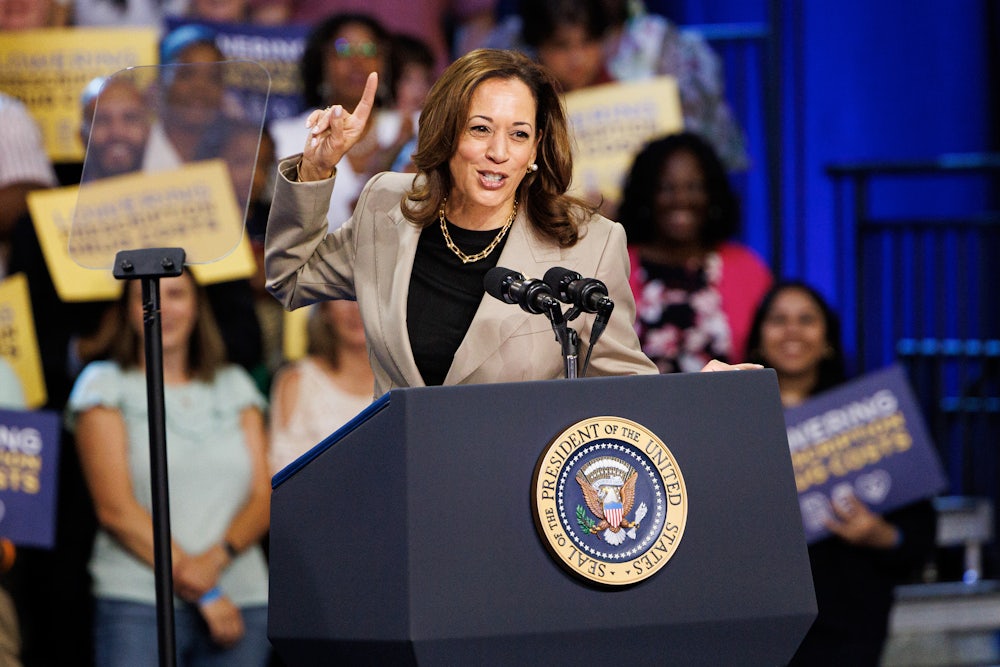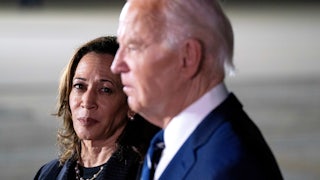Americans are spending more on virtually everything, from groceries to clothing to appliances. Headlines say those price increases are supposedly a mysterious economic force called “inflation.” But if you compare corporate profits in 2019 to the last four years, you’ll find corporations have gouged their way to an almost unbelievable $1.5 trillion in excess profits since 2020—that’s in addition to their pre-pandemic profit rates.
That means the average American household has paid an eye-popping $12,000 in higher prices solely to pump up quarterly corporate profit margins. To put that figure into perspective, $12,000 could buy the average American household more than two years’ worth of groceries.
Inflation isn’t the problem—it’s corporate greed. And it’s a choice.
To be clear, not every price increase amounts to price gouging. In the early days of the pandemic, manufacturing lines that had hummed efficiently for decades ground to a halt. Global supply chains closed down, and store shelves emptied. A small increase to one input can create cascading effects, which can add up to a much higher price tag.
Supply chains have long since healed, and this week’s inflation report shows that the inflation rate has cooled. But even though inflation has nearly returned to normal, high prices are still shocking Americans, making them feel sour about an economy and labor market that are objectively the strongest in the world right now.
This presents an opportunity for Vice President Kamala Harris to build on the extraordinary economic record of the Biden administration and chart her own path forward. She has already taken a huge step in this direction by launching her economic platform with a promise to make the fight against price gouging a “day one” priority. She has an opportunity to explain why prices are high and to present a plan to fix the problem by centering working Americans, and not the superwealthy and powerful corporations, as the real sources of our economic growth.
Over the last two years, CEOs learned they could get away with padding their profits by keeping prices high. We have really great evidence that this is what’s been happening, because CEOs admitted this is what’s been happening.
For example, Procter & Gamble chief financial officer Andre Schulten bragged during a 2023 earnings call that even though the company’s input costs to make diapers had decreased, they were still keeping consumer prices high. And they were making out like bandits because of it. Even more sharply, a Kroger supermarket chain executive crowed that “a little bit of inflation is always good for our business.”
This corporate embrace of price gouging is a new and troubling development in American capitalism. And this is an area I know something about.
I’ve founded, financed, and/or run 43 different companies, spanning a dozen different industries. I was the first nonfamily investor in Amazon.com. I managed my family home furnishings business, which was one of the largest in the United States, and I founded what became the largest internet advertising company in the world. So I’m deeply acquainted with all the tricks of the trade when it comes to corporate profit margins.
But I’ve never seen executives exult in raising prices like this. In normal times we understood customers hate higher prices, and the customers of your customers really hate higher prices.
We are not in normal times. Four decades of growing corporate concentration has distorted the market so much that CEOs are now addicted to breaking profit records. When their costs go up, prices go up. When their costs go down, prices go up.
To understand how the market currently works, let’s follow the supply chain for milk:
Pre-Pandemic
For many years, the raw material price of milk and the retail price of milk moved together. When the cost to produce milk rises, retail prices rise with it; when production costs fall, retail prices fall too.
Peak Pandemic
That relationship continued through the height of the pandemic. The raw material cost of milk was up 43 percent by May 2022, and retail prices rose a similar 32 percent as a result.
Post Pandemic
But then the relationship broke. By spring 2023, production costs fell by 22 percent, but retail prices barely budged, ticking just 3 percent lower.
The extra money you’re paying certainly isn’t going to the people who milked the cows, sanitized the equipment, and delivered the milk.
In plain English, corporations jacked up their own profit margins simply because they could. And it’s not just the dairy industry. The chasm between corporate costs and profits has never been greater in my lifetime:
- Combined wholesale and retail margins have increased by 25 percent from pre-pandemic times.
- Food and beverage retailers’ profit margins have risen by 29 percent from the pre-pandemic norm.
- And consumer prices have skyrocketed 3.4 times over producer costs over the past year.
Immediately before the pandemic, corporate profits were 9.7 percent of the total gross domestic product. From 2020 to 2023, they spiked to an average 11.2 percent of annual GDP. The disparity between those two numbers amounts to a jaw-dropping $1.5 trillion more of our economy that was transferred over to corporate profits in the last four years.
That money was picked directly from the pockets of American families, who each paid $12,000 more to plump the profit margins of corporations (and that’s not even counting the excess APR rates that have cost the average credit card user $946 over the same four-year period).
This is unsustainable. By taking a stand against those CEOs and bringing prices back down for the American people, Harris can ensure that the American people continue to make our economy the envy of the world.
A healthy economy is an ecosystem where companies compete for consumers—and also for workers, which leads to lower prices and higher wages. Those higher wages result in stronger consumer demand, which causes businesses to create more jobs. Everyone benefits from this virtuous cycle of inclusion, innovation, and demand. And everyone loses when a greedy few CEOs addicted to soaring profits are milking us dry.








